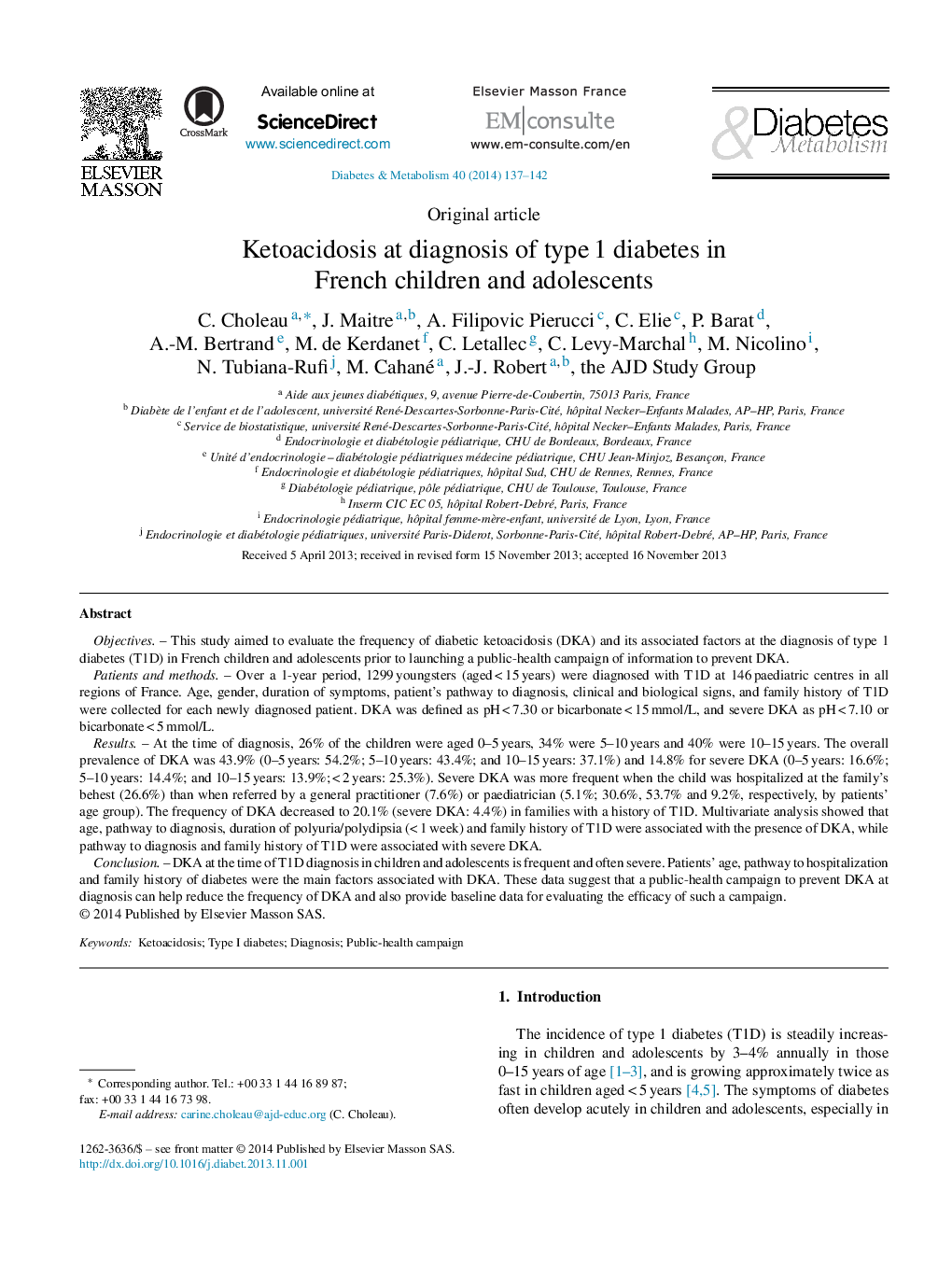| کد مقاله | کد نشریه | سال انتشار | مقاله انگلیسی | نسخه تمام متن |
|---|---|---|---|---|
| 3259757 | 1207584 | 2014 | 6 صفحه PDF | دانلود رایگان |

ObjectivesThis study aimed to evaluate the frequency of diabetic ketoacidosis (DKA) and its associated factors at the diagnosis of type 1 diabetes (T1D) in French children and adolescents prior to launching a public-health campaign of information to prevent DKA.Patients and methodsOver a 1-year period, 1299 youngsters (aged < 15 years) were diagnosed with T1D at 146 paediatric centres in all regions of France. Age, gender, duration of symptoms, patient's pathway to diagnosis, clinical and biological signs, and family history of T1D were collected for each newly diagnosed patient. DKA was defined as pH < 7.30 or bicarbonate < 15 mmol/L, and severe DKA as pH < 7.10 or bicarbonate < 5 mmol/L.ResultsAt the time of diagnosis, 26% of the children were aged 0–5 years, 34% were 5–10 years and 40% were 10–15 years. The overall prevalence of DKA was 43.9% (0–5 years: 54.2%; 5–10 years: 43.4%; and 10–15 years: 37.1%) and 14.8% for severe DKA (0–5 years: 16.6%; 5–10 years: 14.4%; and 10–15 years: 13.9%; < 2 years: 25.3%). Severe DKA was more frequent when the child was hospitalized at the family's behest (26.6%) than when referred by a general practitioner (7.6%) or paediatrician (5.1%; 30.6%, 53.7% and 9.2%, respectively, by patients’ age group). The frequency of DKA decreased to 20.1% (severe DKA: 4.4%) in families with a history of T1D. Multivariate analysis showed that age, pathway to diagnosis, duration of polyuria/polydipsia (< 1 week) and family history of T1D were associated with the presence of DKA, while pathway to diagnosis and family history of T1D were associated with severe DKA.ConclusionDKA at the time of T1D diagnosis in children and adolescents is frequent and often severe. Patients’ age, pathway to hospitalization and family history of diabetes were the main factors associated with DKA. These data suggest that a public-health campaign to prevent DKA at diagnosis can help reduce the frequency of DKA and also provide baseline data for evaluating the efficacy of such a campaign.
Journal: Diabetes & Metabolism - Volume 40, Issue 2, April 2014, Pages 137–142